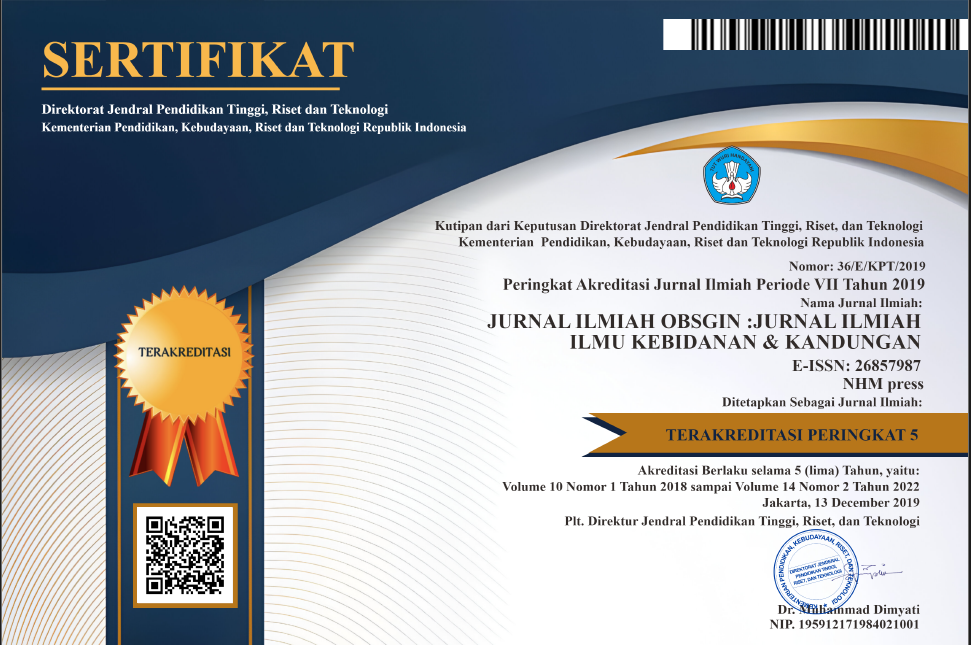ANALISIS PERBEDAAN KESEHATAN DASAR DAN HYGIENE PERORANGAN PADA BALITA TERHADAP STATUS GIZI
Abstract
Generally, malnutrition is a public health problem involving multi- disciplinary and must always be controlled, especially for people living in developing countries. The implementation of the Nutrition program at the Masaloka Raya Public Health Center is running well, systematically, and sustainably. However, the results of the program have not eliminated the malnutrition rate. The purpose of this study was to determine differences in nutritional intake, basic health care, individual hygiene in under-fives with poor nutritional status, and normal nutritional status in the Working Area of Masaloka Raya Public Health Center, Bombana Regency in 2021. The research design to identify the relationship between each variables, and the research design is a case-control study using the Nonparametric Mann Witney U Test. The results showed there were differences in nutritional intake foods containing energy, carbohydrates, protein, fat, and personal hygiene and basic service health on the nutritional status of children under five, (P.Value < 0.05), The dependent variable is predicted to support the improvement of nutritional status. This also explains that the reduced intake of these six factors is the cause of malnutrition
References
Alifariki, L. O. (2020). Gizi Anak dan Stunting. Yogyakarta. Penerbit LeutikaPrio.
Alpin, A. (2021). Hubungan Karakteristik Ibu dengan Status Gizi Buruk Balita di Wilayah Kerja Puskesmas Tawanga Kabupaten Konawe. Nursing Care and Health Technology Journal (NCHAT), 1(2), 87–93.
Dinas Keseharan Kab.Bombana. (2020). Profil Kesehatan Kabupaten Bombana. Bidang Data dan Informasi Kab/Bombana.
Hidayat, T. S., & Jahari, A. B. (2012). Perilaku pemanfaatan posyandu hubungannya dengan status gizi dan morbiditas balita. Buletin Penelitian Kesehatan, 40(1), 1–10.
Kang, Y., Aguayo, V. M., Campbell, R. K., Dzed, L., Joshi, V., Waid, J. L., Gupta, S. D., Haselow, N. J., & West Jr, K. P. (2018). Nutritional status and risk factors for stunting in preschool children in Bhutan. Maternal & Child Nutrition, 14, e12653.
Kavosi, E., Rostami, Z. H., Kavosi, Z., Nasihatkon, A., Moghadami, M., & Heidari, M. (2014). Prevalence and determinants of under-nutrition among children under six: a cross-sectional survey in Fars province, Iran. International Journal of Health Policy and Management, 3(2), 71.
Kementerian Kesehatan RI. (2018). Laporan Riskesdas 2018. Laporan Nasional Riskesdas 2018.
Kusumawati, E., & Rahardjo, S. (2012). Pengaruh Pelayanan Kesehatan terhadap Gizi Buruk Anak Usia 6 _ 24 Bulan. Kesmas: Jurnal Kesehatan Masyarakat Nasional (National Public Health Journal), 6(4), 158–162.
Olivares, S., Kain, J., Lera, L., Pizarro, F., Vio, F., & Morón, C. (2004). Nutritional status, food consumption and physical activity among Chilean school children: a descriptive study. European Journal of Clinical Nutrition, 58(9), 1278–1285.
Organization, W. H. (2020). UNICEF/WHO/The World Bank Group Joint Child Malnutrition Estimates: levels and trends in child malnutrition: key findings of the 2020 edition.
Organization, W. H. (2021). Levels and trends in child malnutrition: UNICEF/WHO/The World Bank Group joint child malnutrition estimates: key findings of the 2021 edition. In Levels and trends in child malnutrition: UNICEF/WHO/The World Bank Group joint child malnutrition estimates: key findings of the 2021 edition.
PKM Masaloka Raya. (2021). Laporan PKM Masaloka Raya.
Prop.Sultra, B. (2020). Propinsi Sulawesi Tenggara Dalam Angka. BPS Kendari.
Purnama, A. P., & Andrias, D. R. (2016). Hubungan Praktik Pengasuhan Terkait Higiene Sanitasi Dengan Status Gizi Balita. Jurnal Penelitian Kesehatan, 14(3).
Risa, H., Warganegara, E., Rachmawati, E., & Mutiara, H. (2018). Hubungan antara Personal Hygiene dan Status Gizi dengan Infeksi Kecacingan pada Siswa Sekolah Dasar Negeri di Natar. Jurnal Agromedicine, 4(2), 326–332.
Suherman, S., & Qurota‘Aini, F. (2019). Hubungan Antara Personal Hygiene dan Status Gizi dengan Kejadian Diare pada Siswa Di SD Negeri Pamulang 02 Kecamatan Pamulang Tahun 2018. Jurnal Kedokteran Dan Kesehatan, 15(2), 199–208.











